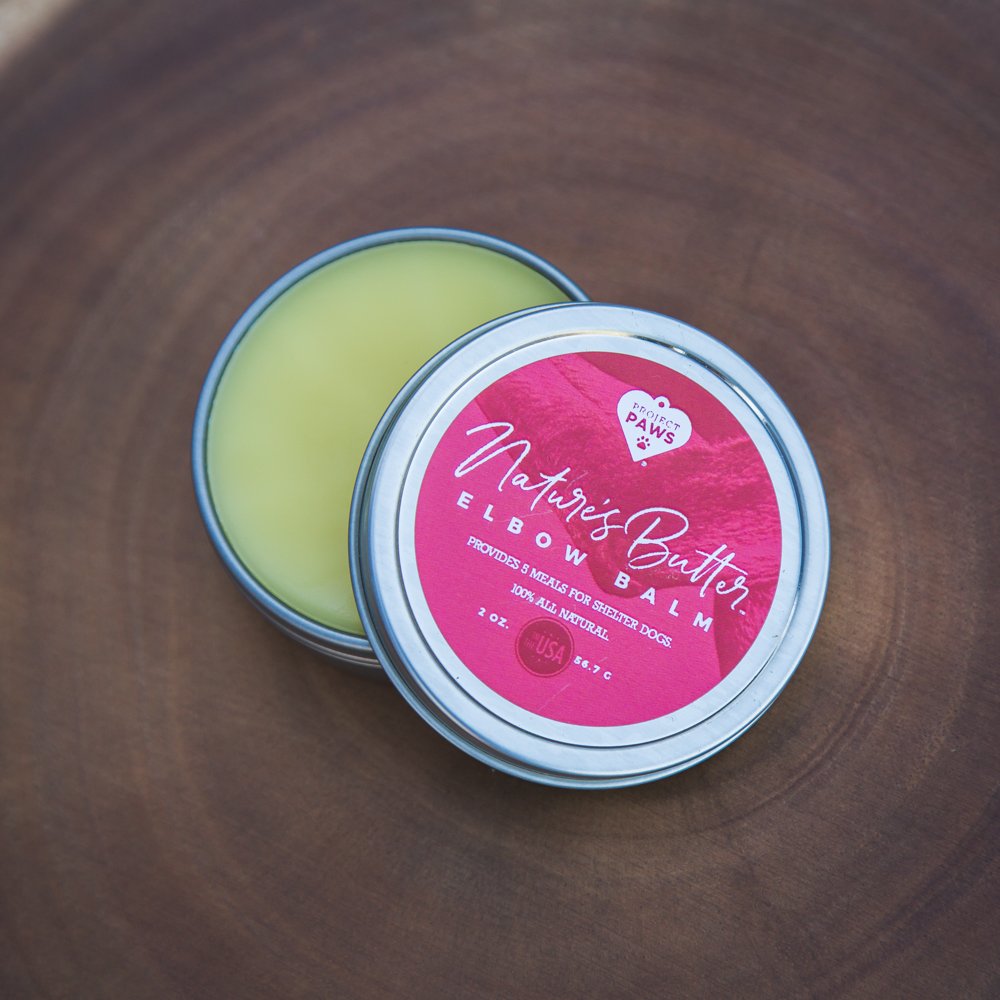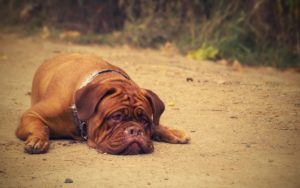
The rough, dry patches of skin dogs develop on their elbows are sometimes referred to as pressure sores because they are caused by the repeated, long-term pressure of lying on hard surfaces.
However, not all dogs that forsake their cushy beds in favor of wood or tile floors develop elbow calluses. At least one of the following factors tend to contribute to their formation.
1. Breed/Size
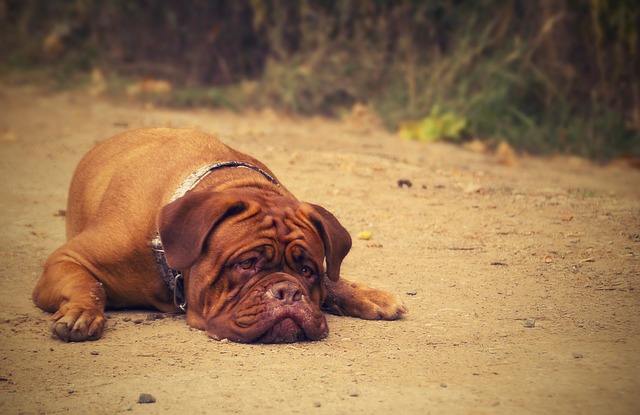
Pressure sores develop on bony protrusions (mainly the elbows, but the hips and hocks may also be affected) in order to help protect the joint. While any size or breed of dog may get them, larger dogs, such as those listed below, are more often afflicted due to the excess pressure caused by their size and weight.
- Great Dane
- Mastiffs
- Dogue de Bordeaux
- Cane Corso
- Basset Hound
- Bloodhound
- Shar Pei
- Boxer
- Rottweiler
- Rhodesian Ridgeback
- Weimaraner
- Vizsla
These breeds are all short coated, making them more vulnerable to calluses. Dogs with longer, thicker hair are less likely to develop pressure sores because their coats act as buffers between the bony joint and the hard surface.
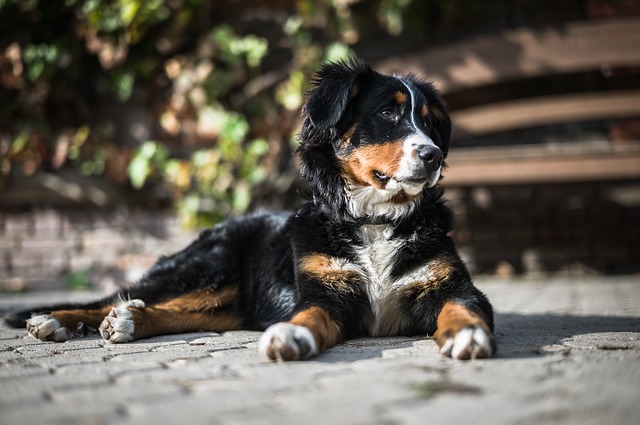
However, due to their sheer size, some breeds with dense “double coats” still develop elbow calluses:
- Irish Wolfhound
- St. Bernard
- Bernese Mountain Dog
- Samoyed
- Akita
- Great Pyrenees
- Newfoundland
- Leonberger
- Husky
- German Shepherd
Overweight and obese dogs are more likely to develop pressure sores even if they are smaller breeds. For example, Pugs and Dachshunds are prone to carrying excess weight and also have a higher rate of elbow calluses than their leaner small breed cousins. Yet another reason to keep your pooch fit and trim!
2. Advanced Age
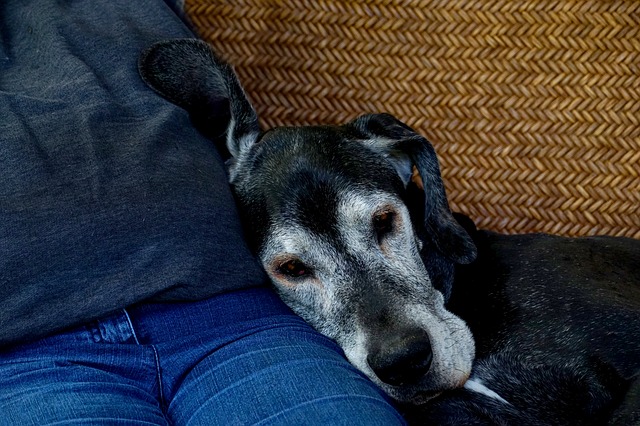
There are a few reasons senior dogs are more prone to elbow calluses:
They tend to be less active.
The more time a dog spends lounging on hard floors, patios or hard-packed dirt, the more likely they are to be afflicted with elbow calluses. As dogs age, they naturally become more sedentary, choosing to doze on the porch rather than frolic through the yard.
You can help protect your senior dog from pressure sores by providing beds in every room where your family congregates and a weather-proof pad for outdoors.
They have had years of repeat exposure to pressure.
Much like the skin on our heels grows thicker and harder over the years, the tissue protecting a dog’s elbows tends to progressively toughen as well. By the time they reach their golden years, they have likely already formed patches of thick tissue to protect the joints. Each nap session on the cool tile floor only adds to their size and severity.
If it is a soothingly cold surface your dog is seeking, try using cooling pads or placing towel-wrapped ice packs in his bed to encourage him to avoid the hard floor.
Natural aging changes make the joints more vulnerable.
As dogs age, their muscles lose mass and tone while their skin becomes thinner and loses elasticity. These natural aging changes reduce the body’s natural defenses against hard surfaces, causing the joints to become more susceptible to calluses.
While you cannot stop the affects of aging, maintaining a healthy exercise routine with your pup may help him retain more muscle tissue as well as stave off obesity and arthritis.
3. Mobility Issues

There are several reasons a dog may lose partial or complete mobility throughout the course of a lifetime. Arthritis, injuries, recovery from surgery, or debilitating illnesses can all take your pooch out of commission for extended periods of time and lead to pressure sores.
If your dog is experiencing reduced mobility, it is important to protect him from painful sores and infections by providing clean, soft bedding and encouraging him to periodically change position.
4. Living on Hard Surfaces

Millions of dogs are forced to live in crates and concrete pens in hoarding situations, inhumane breeding operations and underfunded shelters across the world. Others are confined to lonely backyards with only packed dirt for bedding. When rescued, these pups often suffer from elbow calluses due to their lack of basic creature comforts.
Keep in mind, the presence of pressure sores does not necessarily mean a dog was mistreated. Some pups will choose a cool floor over even the most luxurious dog bed! Others are simply predisposed to developing elbow calluses due to their size, weight and breed characteristics.
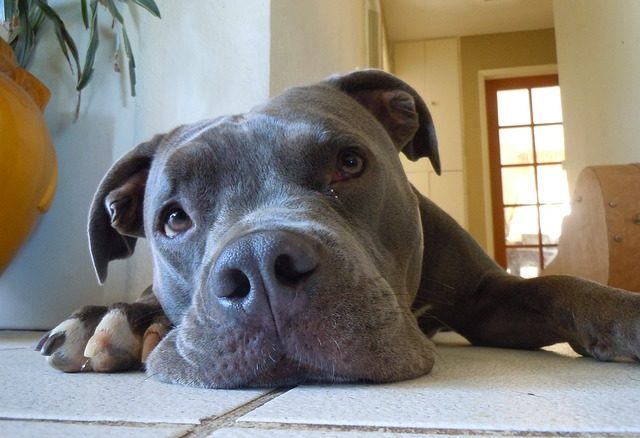
While elbow calluses are generally harmless, excessive dryness can cause discomfort and itching. Problems arise when the dog scratches at the calluses, causing them to crack and bleed. These tiny cracks in the skin allow dangerous bacteria like Staphylococcus to enter the body, causing a painful infection known as callus pyoderma.
Some dogs develop awkward fluid-filled pockets called hygromas which may occur instead-of or in-addition-to a callus. Should these hygromas become infected, it can be quite painful and may even require surgical intervention.
In rare cases, tumors may be mistaken for pressure sores or hygromas, so veterinarian Sarah Smith, an online consultant for Pet Coach, suggests seeing your vet before attempting to treat at home.
“I would recommend a consultation with your veterinarian first so that they may rule out other causes of elbow swelling,” Dr. Smith says. “They may suggest X-rays to assess the elbow joint and may prescribe anti-inflammatories.”

The good news is, elbow calluses are easy to care for. Intervening at the earliest signs of hair loss and dry skin can prevent them from becoming anything more than a mild inconvenience.
In addition to encouraging your pooch to snooze on soft surfaces, applying a dog-safe moisturizing elbow balm can help soften and soothe the skin. Nature’s Butter Elbow Balm is packed with Shea Butter, Almond Oil, Coconut Oil, Beeswax, Cocoa Seed Butter and many more of the finest oils and butters nature has to offer.
When applied regularly, Nature’s Butter prevents cracking and locks in the vital moisture your dog’s tough elbow skin needs to stave off itching and discomfort.
These statements have not been evaluated by the Food and Drug Administration. This product is not intended to diagnose, treat, cure, or prevent any disease. The information on this website is not intended to replace a one-on-one relationship with a qualified healthcare professional.
The post 4 Common Causes Of Elbow Calluses In Dogs appeared first on iHeartDogs.com.
via Whisker Therapy
